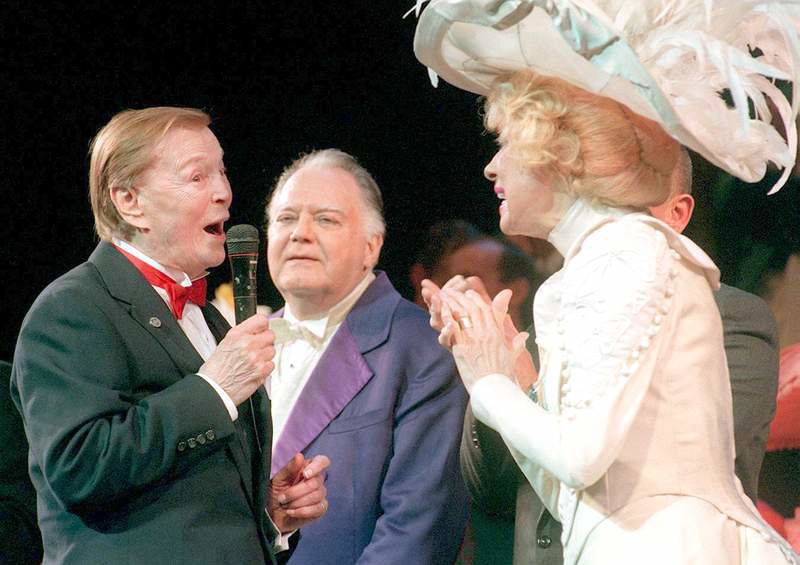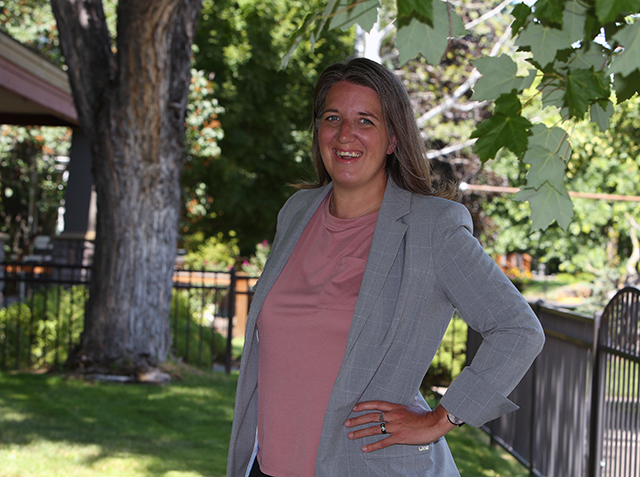John Kenley took big stars to small-town productions
Published 4:00 am Sunday, November 1, 2009

- John Kenley informs Carol Channing that he is not 90 yet after she sings happy birthday to him in 1995 after a production of Hello, Dolly at the Palace Theater in Cleveland. Kenley, a theater producer who ran a legendary summer stock circuit in Ohio beginning in the 1950s that attracted numerous Broadway and Hollywood stars, has died. He was 103.
John Kenley, a Midwest theater impresario renowned for taking large-scale productions to small towns and cities, and festooning the shows with headliners like Mae West, Gloria Swanson and Burt Reynolds, died Oct. 23 in Cleveland. He was 103, and had homes in Cleveland and Florida.
The cause was complications of pneumonia, a friend, Anita Dloniak, said. No immediate family members survive.
Trending
Kenley, who began his stage career as a song-and-dance performer in New York in the 1920s, presented hundreds of productions, often in large civic auditoriums and music halls, and in places where professional theater was scarce, like eastern Pennsylvanias coal country.
His Kenley Players, a company founded in the 1940s, became a fixture on the summer stock circuit in Akron, Columbus, and elsewhere in Ohio and beyond.
His hallmark, and the key to his box office success, was to give top billing to stage and screen stars, luring them with the promise of a big payday. Besides West, Swanson and Reynolds, they included Arthur Godfrey, Ethel Merman, Billy Crystal, Tommy Tune, Florence Henderson, Robert Goulet, Mitzi Gaynor and William Shatner. They would often mingle with audiences and sign autographs.
Kenley was known to book stars, even unlikely ones, for their box office potential. He cast the television host Hugh Downs, for example, in Under the Yum Yum Tree and the talk-show star Merv Griffin in Come Blow Your Horn. He hired Jayne Mansfield, the actress who had been promoted as the next Marilyn Monroe, to star in Bus Stop. (Monroe starred in the film version.) And he recruited Joe Namath to play the drifter in a 1971 production of Picnic, when he was still near the height of his career as quarterback of the New York Jets.
Kenley was born John Kremchek in Denver on Feb. 20, 1906. His parents were saloon keepers who later moved the family to Cleveland. In the 1920s, he made his way to New York, hoping to break into show business. He performed with Martha Graham as a dancer-acrobat in John Murray Andersons Greenwich Village Follies. It was Anderson who suggested he change his name to Kenley.
In 1928, Kenley began reading plays for the Shuberts. In 1930, he became assistant to one of the Shubert brothers, Levi, who was known as Lee Mr. Shuberts left-hand man, as Kenley put it in an interview with Martha Schmoyer LoMonaco for her history Summer Stock! An American Theatrical Phenomenon (Palgrave Macmillan, 2004).
Trending
He worked for Shubert for the next decade, reading submissions like Lillian Hellmans Childrens Hour and William Saroyans Time of Your Life. Every actor that came to New York had to come through me, he told LoMonaco, so we used to all lunch together at Gilhoo-leys Sardis was too expensive. He added, Wed walk together down Shubert Alley and call ourselves the Kenley Players, and Ive used that name ever since.
After serving as a pharmacists mate in the U.S. Merchant Marine in World War II, he created a theater in Deer Lake, Pa., a resort town catering to the coal barons, built a repertory company there in a converted church and incorporated it as the Kenley Players.
The company went from playing to audiences of 500 at Deer Lake to as many as 5,000 in the 1970s and 80s at his tri-city circuit of theaters in Columbus, Dayton and Warren, Ohio, and at sites in Michigan. The Warren operation later moved to Akron. In 1984, the Kenley Players moved into the Playhouse Square Center in downtown Cleveland, with its 3,000-seat State Theater.
Stars remained his bread and butter. I never met a star who didnt deserve to be a star, Kenley said in a telephone interview in 2006. He would build his shows around them, even if it meant making adjustments, as he put it, which could mean rewriting the script, adding musical numbers or doing whatever it took to make them happy.
He would always add a tap number for Ann Miller, even in Hello, Dolly, said Patrick Quinn, a former president of the Actors Equity Association and a former employee of Kenleys in Ohio. Quinn spoke in an interview in 2006, the year he died.
His most famous interpolation was in a 1975 production of She Loves Me, starring Jack Jones and Anita Gillette, Quinn said. He had Jones close the first act singing, What I Did for Love, the hit from A Chorus Line, the musical created by Michael Bennett. That seemed to satisfy everyone, Quinn said, at least until a telegram arrived from Michael Bennett.







